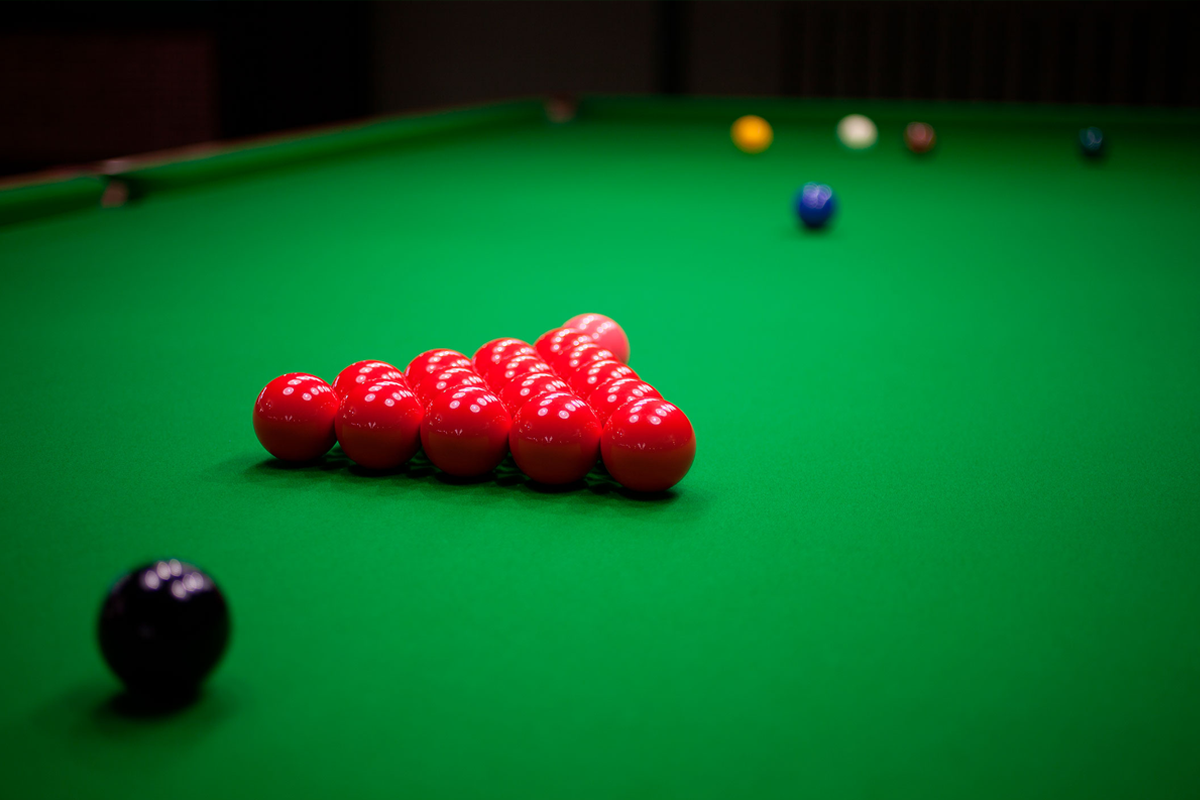Snooker is a cue sport that requires tremendous skill, focus, and precision. Often called the “chess of cue sports,” success in snooker demands the ability to think several shots ahead and execute them flawlessly. Mastering snooker techniques enables a player to control the cue ball, pocket balls efficiently, play a range of shots, and construct high breaks. This comprehensive guide explores the essential techniques for elevating your snooker skills.
Fundamentals: Stance, Bridge and Cueing
Developing proper fundamentals establishes a solid base for snooker excellence. From stance to cueing, mastering these basics paves the pathway to consistency and control.
An effective stance balances stability and flexibility. Feet should be shoulder-width apart, with the leading foot pointing forward and the back foot angled at 45 degrees. The weight distribution shifts onto the back foot to instil a sense of controlled balance. Keep the knees slightly flexed and avoid locking them to facilitate movement.
When addressing the cue ball, bend slightly at the waist while keeping the back straight. Avoid hunching, which reduces control of the cue. The head remains still, with your chin up and eyes focused on the object ball. This stance allows fluid movement around the table while maintaining balance and alignment.
The bridge hand guides the cue steadily and influences cue ball spin. Use an open bridge for most shots, spreading the thumb and index finger in a “V” shape. Place the hand just above the table cloth, keeping the knuckles elevated to generate forward roll. For increased power or spin, a closed bridge places the index finger down the cue. Experiment to discover the optimal bridge for specific shots.
Cue the ball as smoothly as possible. Chalk the cue tip before each shot to prevent miscuing. Carefully align your body with the shot line. Draw the cue back slowly, then accelerate smoothly into the cue ball. Follow through straight for pure strikes. Cueing this way engenders accuracy and optimal cue ball control.
Adopting the proper snooker stance, bridge and cueing action establishes a solid foundation. Master these basics diligently before moving to more advanced techniques. Consistency stems from an ingrained, repetitive approach.
Shot Types: Positional Play and Ball Striking
All shots in snooker fall into two broad categories – potting shots and positional shots. Mastering both shot varieties will improve scoring and break building.
Potting shots require pocketing the object ball. Focus on striking the cue ball into the centre of the object ball to maximise accuracy. Follow through the shot line to keep the cue ball on path.
Positional shots involve placing the cue ball in an ideal position for the next shot. The key lies in controlling speed, spin and angles. For example, striking low on the cue ball imparts backspin, preventing the cue ball from travelling too far after contact. You can also use cushions to angle the cue ball to the desired position. Judicious spin, speed and angles enable you to smoothly move around the table.
In addition to potting and positional play, adept ball striking boosts scoring power. Develop a full repertoire of shots like stun, topspin, sidespin, swerve and more. For example, use topspin when you need the cue ball to keep moving forward after impact. Sidespin sends the cue ball laterally after striking an object ball.
Strive to master not just one type of shot, but to expand your range of ball striking skills. Adapt your shot selection to each situation. Consistent ball striking and tactical shot choices keep the cue ball under control, enabling bigger breaks.
Tactical Play: Safety Shots and Snookers
Tactical play is a hallmark of elite snooker, involving safety shots and snookers to gain control of the table. When executed correctly, these ploys frustrate your opponent while creating scoring chances for you.
Safety shots prevent easy counterattacks by your opponent. After your break ends, play a conservative shot leaving the cue ball safe, such as behind a colour ball. This hampers your opponent’s efforts to pot a red ball and re-establish position.
Snookers take this concept further by obstructing cue ball access to a nominated object ball. Strike a red ball and hide the cue ball behind one or more colours. Your opponent must then employ finesse shots to escape the snooker. Even top players may need several attempts to break a tight snooker.
While not scoring shots themselves, safeties and snookers form an essential part of matchplay strategy. They create chances to win frames or force mistakes. Be prepared to use tactical shots when needed – but beware of overuse. Excessive negative play frustrates spectators and fails to build your own scoring opportunities.
Cue Ball Control: Minimising Errors and Building Breaks
Controlling the cue ball is arguably the most important snooker skill, reducing errors while enabling high breaks. Tight cue ball control demands focus, precision shot making, and a seamless flow around the table.
Strive to place the cue ball where intended after every shot. Whether potting balls or playing position, you want the cue ball to behave predictably. Using the right technique for each shot is key – from applying spin and speed to utilising cushions.
Force yourself to pause and think before each shot. Consider the optimal striking zone on the cue ball and visualise the desired outcome. Avoid rushed shots that lack purposeful intent.
Complement repetitive drills with match practice. Analyse recurring errors to identify flaws in your technique or thinking. Refine your skills until cue ball control becomes second nature.
With mastery over the cue ball, you can confidently attempt large breaks. String long pots together with smooth positional play. Remain focused as the break builds, adhering to your consistent basics. Cue ball control enables prolific scoring, taking your snooker to an elite level.
Practice Recommendations: Drills, Routines and Improvement Areas
Practice is the pathway to cue sport mastery. To excel at snooker, integrate thoughtful drills, pre-shot routines and targeted improvement areas into your practice sessions.
Dedicate time to fundamental drills like long potting, cueing straight lines, and position play. Progress to situational drills based on match scenarios. Varying your practice builds well-rounded technique.
Establish consistent pre-shot routines to instil discipline. For example, walk around the table, visualise the shot, take practice strokes to align your body, then address the shot. Repeat this sequence before every shot to aid concentration.
Assess your weaknesses and set goals for improvement, such as increasing break size or shot consistency. Measure your progress over time. Be patient – mastery arrives through gradual, persistent effort.
So, with a tailored practice approach, your snooker skills will reach new heights. Consistency breeds excellence.

